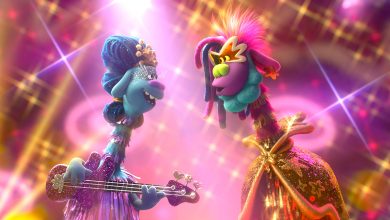
My daughter loves robots.
She loves them so much, she got 4 new ones for her birthday last week, along with building toys, books, a camping outfit, art kits, and a terrarium.
Sounds like a great gender neutral haul, yeah?
I wonder what you are imagining dear reader, when I say that my daughter received robots.
Maybe something like this?

Or maybe this?

Probably not something like this:
That’s because when we think about science toys, we don’t think about things that are typically relegated to the pink aisles. The robot dog my daughter begged for isn’t marketed as a robot. It’s marketed as a cute puppy look-alike. But my daughter, who has already turned it over to examine the various visible mechanisms and moving parts in addition to mastering the related Kindle app, knows the truth. It’s a robot. And she thinks that’s cool.
She also knows that her growing interactive chirping bird collection are robots. They don’t move around, but that’s okay – they have computer chips and sensors that react to other bird chirps and human contact. They are robots.
Her Furby, which will talk on cue and move and react to external stimuli as well as to its own app, is a robot.
We are surrounded by robots.
These robots may not look what we typically think of as robots, but I think they qualify – they are freestanding objects which react directly to external stimuli which can be programmed to execute specific cued reactions. Robots.
The thing is, absolutely none of these things are marketed as robots and I would be completely unsurprised if someone tries to convince me that some of these toys are not actually robots. Which might really be the case, depending on how broad or narrow your robot definition is, but I’m not going to go home and tell my daughter that they are not robots, when she thinks that they are and that makes her happy.
She talks about her robot dog and how it is different from a real dog. She can tell you about what the benefits are to having a robot dog, and why it cannot play with the other dogs at the dog park. She loves her robot dog.
She says she loves robots.
When I ask her, “Do you want to learn how to make robots?” she enthusiastically says “YES!”
This isn’t a bad thing. This is, in fact, a good thing. A girl who knows she loves robots and that it is OKAY to love robots, even in a world where no one markets something that looks like our collective robot consciousness to 5-year-old girls, is a girl who might continue on to be interested in moving on to more complex robots that she can build herself and program. Because she knows, she likes robots.
To some extent, I suppose this is a passionate plea for more bridge toys, but really, I think of it more as flipping the script – the fluffy white dog that seems to have no redeeming value other than making my daughter deliriously happy (which is a great value, to be sure), is, under the fluff and pink bows, a robot. It’s a #STEM toy masquerading as an innocent fluffy puppy.
There have been moments where I’ve wondered where I’ve gone wrong, raising such outwardly gender conforming children. But there’s more to the story – I could have described her birthday presents as “a fluffy white yappy dog, a mommy-baby electronic owl set, Elves Lego, new doll clothes, etc”. But underneath the gender conformity is a message that our family can craft for ourselves – these are robots, these are building sets that challenge your dexterity and give you building blocks for a fabulous fantasy world that you can fill in yourself. My daughter is allowed to decide for herself what her interests are. No one blinked an eye when my son wanted dinosaurs or Atlantis or Ninjago instead of Lego City. If his sister wants her Lego sets to have female characters and glittery mushrooms and tree forts, that’s cool.
I don’t by any means think that we can or should let marketers off the hook. I still believe that it is not enough to just not buy whatever problematic thing is on the market. But we also have to live in this world and find ways to empower our children within in it. Even when it’s a fluffy white dog robot.
Featured image courtesy of DeviantArt user Hosio. H/T to Ray Bradbury for the title inspiration.





